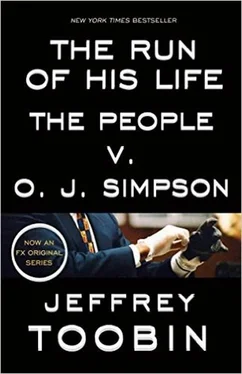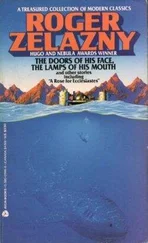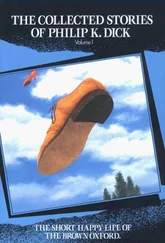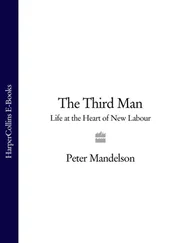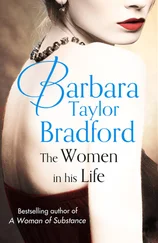However, these literary ventures paled in comparison to the top priority of Simpson’s financial team in the wake of the verdict. All through the summer of 1995, Skip Taft and Larry King had engaged in detailed negotiations about a pay-per-view special following the verdict. The two-hour program was to feature King interviewing Simpson live, as well as phone calls from viewers. (It was to take place whether Simpson was acquitted or convicted, but not if the trial ended in a hung jury.) Turner Broadcasting, the parent company of Cable News Network, would buy the rights from Simpson for $25 million. In lieu of a fee for himself, King would arrange for about $1 million of the money to go to his favorite charity, the Cardiac Foundation. Simpson would receive about $4 million personally. According to King and Taft’s arrangement, the balance of the money-more than $15 million, after expenses-would go to establish a network of “O.J. Simpson Boys Clubs” in cities across America.

The photographs of the victory party ran as scheduled in the Star and Stern , but none of the other schemes came to fruition. There has been no sequel to I Want to Tell You . As soon as word leaked out to the public that Larry King was even considering participating in a pay-per-view interview with Simpson, executives at CNN’s parent company announced that no such project would take place. Simpson’s prospects for any pay-per-view appearance vanished completely when cable-system operators across the country said they would refuse to distribute any broadcast that would enrich the former defendant. The darkly comic notion of “O.J. Simpson Boys Clubs” never materialized.
All of these projects fell victim to the enormous backlash against the verdict in mainstream-that is, white-America. Because of television, the announcement of the verdict became a nationally shared experience-one on par, incredibly, with the assassination of John F. Kennedy. In the days immediately after the end of the case in court, televised images of the verdict itself yielded to images of people watching the verdict. The pictures revealed many scenes of African-Americans cheering the verdict, from college campuses to battered women’s shelters. White viewers, by contrast, watched in stunned, generally appalled, silence. Reaction to the verdict was promptly replaced by reaction to the reaction, and then reaction to that reaction and so on, which is to say, as Henry Louis Gates, Jr., observed, “black indignation at white anger at black jubilation at Simpson’s acquittal.” The passing months did not so much heal the wounds in race relations as witness the growth of an ugly scar.
Assessing the “meaning” of the Simpson case became, and remains, a cottage industry. But in evaluating that legacy, it is useful, even necessary, to return to the underlying events-that is, to what happened outside Nicole Brown Simpson’s condominium on the night of June 12, 1994. The Simpson case was never some free-floating set of ideas ripe for any number of equally valid interpretations. The case emerged from a set of facts, and those facts matter.
As to the central fact in the case, it is my view that Simpson murdered his ex-wife and her friend on June 12. Any rational analysis of the events and evidence in question leads to that conclusion. This is true whether one considers evidence not presented to the jury-such as the results of Simpson’s polygraph examination and his flight with Al Cowlings on June 17-or just the evidence established in court. Notwithstanding the prosecution’s many errors, the evidence against Simpson at the trial was overwhelming. Simpson had a violent relationship with his ex-wife, and tensions between them were growing in the weeks leading up to the murders. Simpson had no alibi for the time of the murders, nor was his Bronco parked at his home during that time. Simpson had a cut on his left hand on the day after the murders, and DNA tests showed conclusively that it was Simpson’s blood to the left of the shoe prints leaving the scene. Nicole’s blood was found on a sock in his bedroom, and Goldman’s blood-as well as Simpson’s-was found in the Bronco. Hair consistent with Simpson’s was found on the killer’s cap and on Goldman’s shirt. The gloves that Nicole bought for Simpson in 1990 were almost certainly the ones used by her killer.
It is theoretically possible, of course, that Simpson killed the two victims and that the police also planted evidence against him-that he was guilty and framed. But I am convinced that did not happen, and that it could not have happened. In their summations, Cochran and Scheck suggested that the police, in their effort to frame Simpson, planted at least the following items: (1) Simpson’s blood on the rear gate at Bundy; (2) Goldman’s blood in Simpson’s Bronco; (3) Nicole’s blood on the sock found in his bedroom; (4) Simpson’s blood on the same sock; and (5) the infamous glove at Rockingham, which had, as Clark put it in her summation, “all of the evidence on it: Ron Goldman’s fibers from his shirt; Ron Goldman’s hair; Nicole’s hair; the defendant’s blood; Ron Goldman’s blood; Nicole’s blood; and the Bronco fiber.” The defense never spelled out how all this nefarious activity took place, but pulling it off would have required more or less the following. The core of the defense case was, of course, that Fuhrman surreptitiously took that glove from the murder scene to the defendant’s home. Not only would he have had to transport the glove with its residue of the crime scene, but he would also have had to find some of Simpson’s blood (from sources unknown) to deposit upon it and then wipe the glove on the inside of Simpson’s locked car (by means unknown)-all the while not knowing whether Simpson had an ironclad alibi for the time of the murders. To me, this possibility is simply not believable, even taking into consideration Fuhrman’s repugnant racial views.
The other police conspirators (conspicuously unnamed by the defense) would have had to be equally adept and even more determined. Many of the police officers at the crime scene noticed the blood on the back gate at Bundy; someone would have had to wipe that off and apply Simpson’s. The autopsies, where blood samples were taken from the victims, were not performed until June 14, more than a full day after the murders. Someone would have had to take some of Goldman’s blood and put it in the Bronco, which was then in police custody. And someone (the same person? another?) would have had to take some of Nicole’s blood and dab it on the sock, which was then in a police evidence lab. (When Vannatter took his notorious trip to Brentwood with the blood vial, he only had Simpson’s sample, not Nicole’s, with him.) All of these illegal actions by the police would have had to take place at a time when everyone involved in the case was under the most relentless media scrutiny in American legal history-and all for the benefit of an unknown killer who, like only 9 percent of the population, happened to share Simpson’s shoe size, twelve.
In their comments after the trial, the jurors gamely tried to defend their verdict, insisting that it was based on the evidence, not mere racial solidarity. Brenda Moran and Yolanda Crawford believed that the glove demonstration doomed the government’s case. “In plain English, the glove didn’t fit,” Moran said. Gina Rosborough said, “I believed from the beginning that he was innocent,” and the course of the trial confirmed her view. Sheila Woods decried the sloppy lab procedures of the LAPD. Lon Cryer was concerned about evidence contamination and rejected Allan Park’s testimony because he was mistaken about the number of cars in the driveway. As for why he gave Simpson a raised-fist salute at the end of the trial, Cryer said, “It was like a ‘Right on to you, Mr. Simpson. Get on with your life. Get your kids. Be happy. Get some closure in your life.’ ” The three jurors who wrote a joint book about the case-Armanda Cooley, Carrie Bess, and Marsha Rubin-Jackson-attributed the decision to a combination of these factors. Anise Aschenbach, the white juror who initially voted for a conviction, asserted with some sadness that she might have fought on if she had felt any possibility of support from her colleagues. In any event, Aschenbach was deeply troubled by the testimony of Mark Fuhrman and the evidence of his racial views.
Читать дальше
